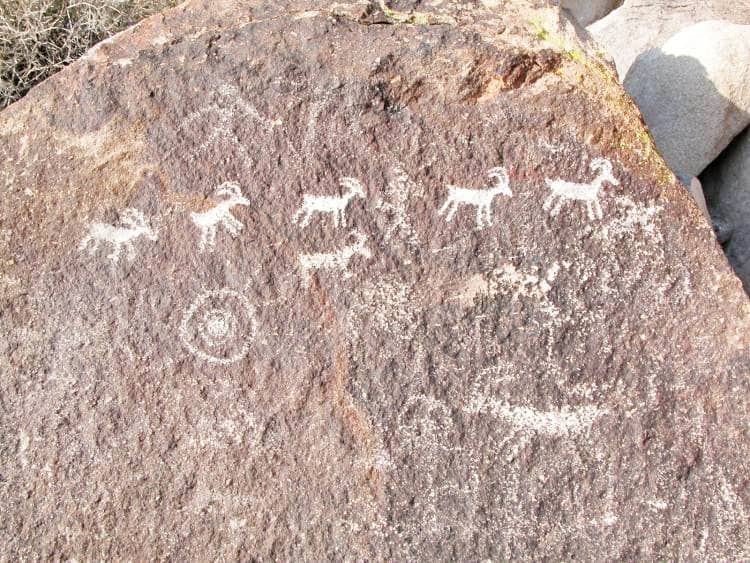VIEWS: 1087
April 19, 2023Avi Kwa Ame National Monument Established by President Biden
With a proclamation on March 21, U.S. President Joe Biden established the Avi Kwa Ame (spelled “Vii Kwame” in Piipaash) National Monument, located in Clark County, Nevada, near Laughlin. The site is culturally significant to the Piipaash and is central to Yuman culture.
The monument is considered reserved federal land, and it includes Spirit Mountain and the desert area around it, together measuring approximately 506,000 acres.
Already a protected traditional cultural property on the National Register of Historic Places, Vii Kwame is a 5,640-foot mountain peak in the Newberry Mountains within the Spirit Mountain Wilderness, which was designated by Congress in 2002.
In the proclamation, President Biden said that the protection of the Vii Kwame area will “preserve its diverse array of natural and scientific resources, ensuring that the cultural, prehistoric, historic, and scientific values of this area endure for the benefit of all Americans.”
Cultural Resources Director Kelly Washington of the Salt River Pima-Maricopa Indian Community has been to the site a number of times. He brought the CRD staff there in 2006 shortly after the department was created, and he said that it is a powerful place.
“There is an abundance of petroglyphs there that tell [us] about events of our history,” he said. “It’s been a few years since I was there, but the last time I was there, some petroglyphs had been chipped. Apparently, people try to chip them off and take them home. Preservation actions are certainly necessary.”
Washington said that the mountain is central in the creation story of the Piipaash:
When Creator was cremated, Xathlywe (Coyote) stole his heart from the fire, ran down the Colorado River and up the Gila with everyone in chase. He outran everyone, stopping to consume his plunder at Vii Kwxas (Greasy Mountain, a.k.a. South Mountain) at what is today called Phoenix. The people returned to Vii Kwame, where Kwsthamxo finished teaching them how to live in this world. From that point, they scattered in different directions, ultimately becoming the tribes we know today.
The Department of the Interior will manage the monument through the Bureau of Land Management as a unit of the National Landscape Conservation System and through the National Park Service.
Through the BLM, Interior Secretary Deb Haaland (Laguna Pueblo) will establish and maintain an advisory committee, including members of tribal nations with a historical connection to the lands within the monument, with the purpose of providing information and advice regarding development of the management plan and the monument’s ongoing management.
The proclamation states that, consistent with the American Indian Religious Freedom Act (42 U.S.C. 1996), Executive Order 13007 of May 24, 1996 (Indian Sacred Sites), and the November 10, 2021, Memorandum of Understanding Regarding Interagency Coordination and Collaboration for the Protection of Indigenous Sacred Sites, the Secretary shall, to the maximum extent permitted by law and in consultation with tribal nations, “ensure the protection of sacred sites and cultural properties and sites in the monument and provide access to Tribal members for traditional cultural, spiritual, and customary uses.”
The uses include collection of native plant medicines, berries and other vegetation, as well as forest products and firewood for personal noncommercial use, so long as each use is carried out in a manner consistent with the proper care and management of the objects.
On April 14, Haaland was joined in Nevada by tribal leaders, elected officials and personnel from the BLM and NPS, to celebrate the designation of the monument.
“I was struck by the power and presence of the ancestors in tribal communities who have prayed on, protected and drawn strength from this special place for thousands of years,” Haaland said.







